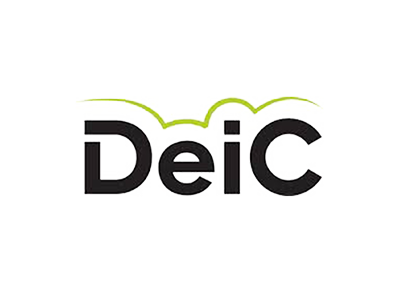Better materials for green energy transition are ahead, as Danish researchers have obtained time at the supercomputer LUMI in Finland. For instance, the computer can help improve catalysts for electrolysis and solar cells that can be thinner and more flexible.
“Simply put, we can get closer to reality with a higher degree of accuracy in our calculations because we can include more factors in the calculations. Reality is complex,” says Professor Kristian Sommer Thygesen, Department of Physics, Technical University of Denmark (DTU).
The national research and education network (NREN) of Denmark, DeiC, has assisted the group in getting the access to LUMI, which is operated by CSC, the Finnish NREN.
Literally working day and night
The collaboration with LUMI evolved from another project, where the group had developed software able to carry out GPU (graphic processing unit) calculations. A major advantage of calculating on GPUs is their ability to undertake many calculations in parallel, thereby allowing to solve extremely large tasks much faster than by traditional computing.
LUMI can run 100,000 calculations simultaneously with 10 calculations on each of its 10,000 GPUs. In the other project, the Danish research group collaborated with CSC regarding the porting of its electron structure code to GPU calculations. The Finnish NREN offered the group a chance to run its software on LUMI for six hours at full capacity. An opportunity too good to miss, even though there was a catch: the group had just 14 days to prepare.
“I honestly didn’t think it was possible (to get ready in 14 days, ed.). My team of five people literally worked day and night to get everything set up. There are a large number of components that need to work together when you’re running real production on the third-largest computer in the world (…). Fortunately for the process, both DeiC, DTU Front Office, and the experts at CSC in Finland were very helpful and quick to respond to our enquiries,” says Kristian Sommer Thygesen.
Supercomputing is a game changer
The Danish group made their deadline, and the six-hour run confirmed that it was possible to achieve the necessary scale-up of the software, running 50,000 calculations simultaneously on LUMI.
“Instead of performing traditional and time-consuming laboratory tests (…), we can now perform calculations to learn about the properties of the materials, such as their mechanical strength and their ability to absorb light. These types of calculations are based directly on quantum mechanical equations, which make them very accurate, but this requires massive HPC (High-Performance Computing, ed.) resources,” explains Kristian Sommer Thygesen, continuing:
“So far, we have only performed our calculations at the DTU supercomputer Niflheim, which is a CPU (Central Processing Unit) facility, because we haven’t had access to large GPU facilities. This is also one of the reasons why we haven’t started the process of moving our code to the GPUs earlier.”
The access to supercomputing is a game changer for the group, Kristian Sommer Thygesen concludes:
“With LUMI resources, we can think in terms of bigger projects and bigger ideas. We can address scientific challenges that don’t just entail lots of calculations with lots of materials mapped out, but also for example calculate more complex properties for these materials.”
One future field is 2D materials. These are materials so thin, that they can be regarded as having only two dimensions. With graphene as the probably best known, 2D materials can be remarkably strong despite being extremely thin. The group of Kristian Sommer Thygesen has created a database with more than 15,000 2D materials. The database not only shows the crystal structure of the materials, but also their basic mechanical, electronic, optical, and magnetic properties. The database continues to grow, as new 2D materials are found. This increases the opportunities of finding the optimal material for a given purpose.
“But for each new material, extensive calculations are needed to establish its properties. We see a significant potential for using supercomputing in this context,” Kristian Sommer Thygesen ends.
The text is inspired by the article “LUMI at full capacity helps research into new materials for solar cells, catalysts, and quantum technology” by Marie Charllotte Søbye at the DeiC website.







